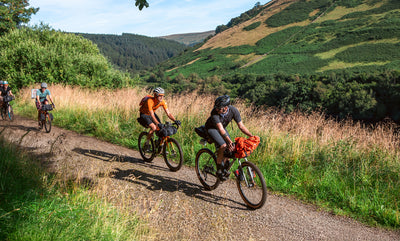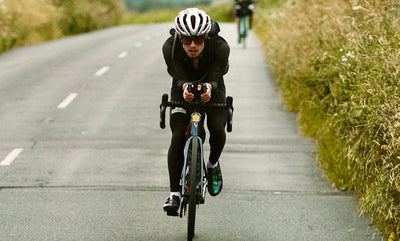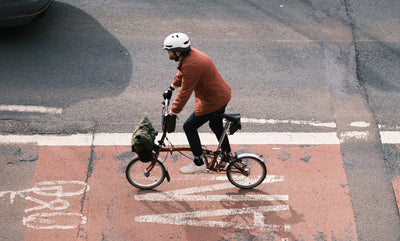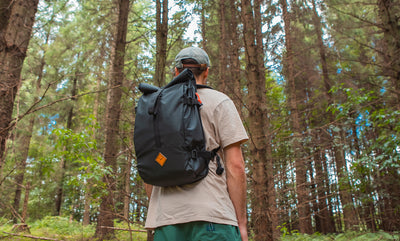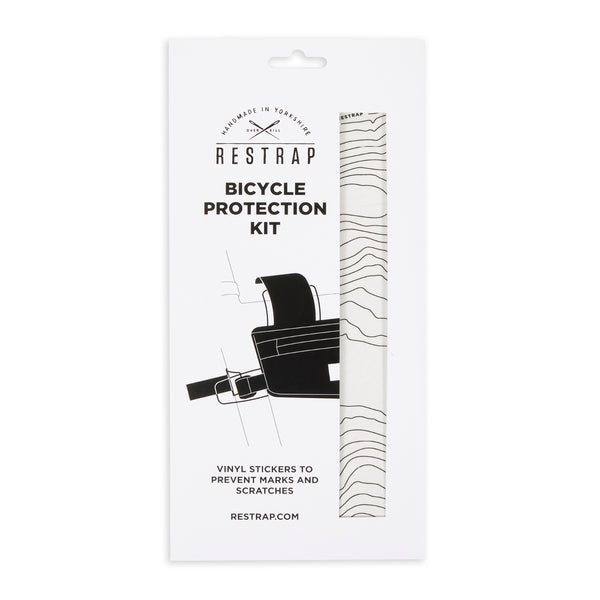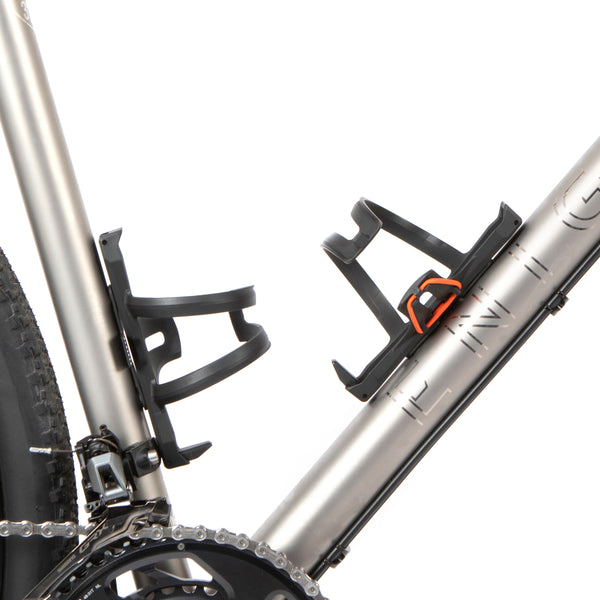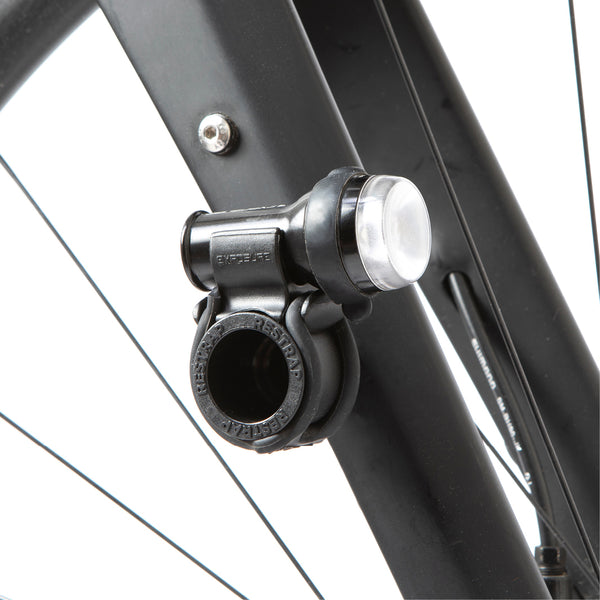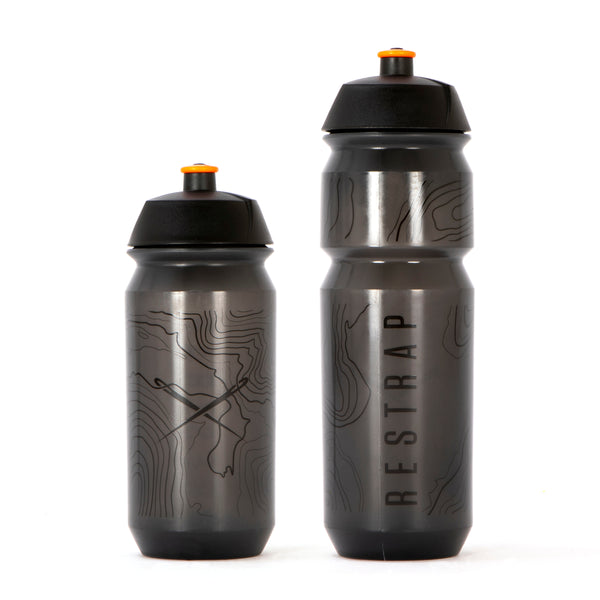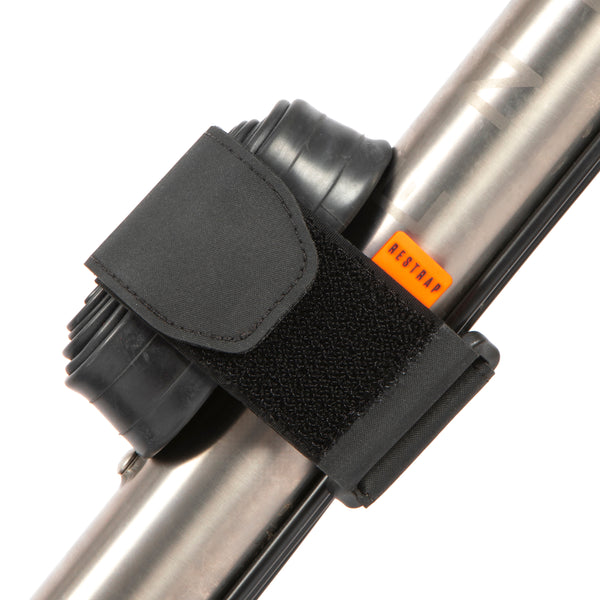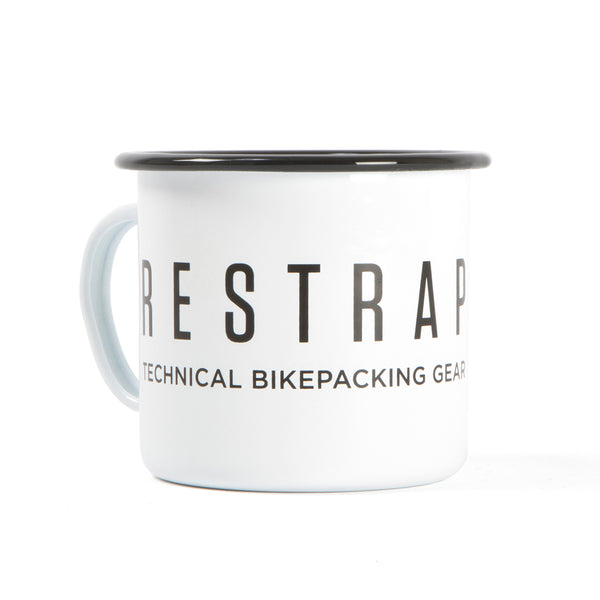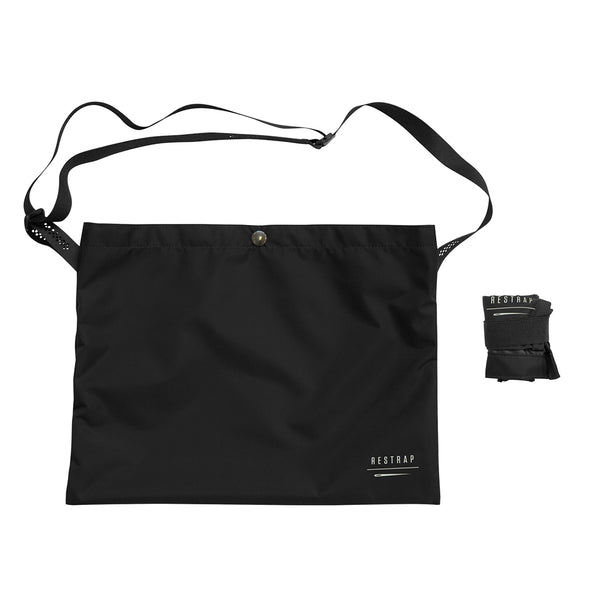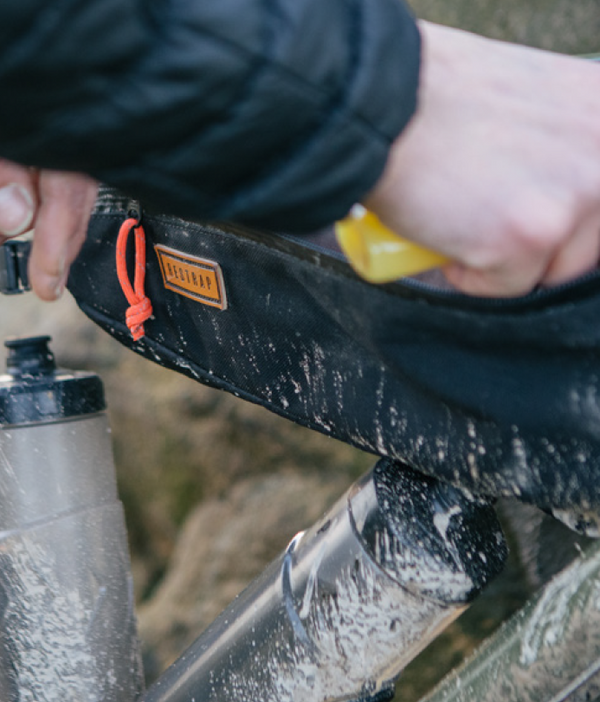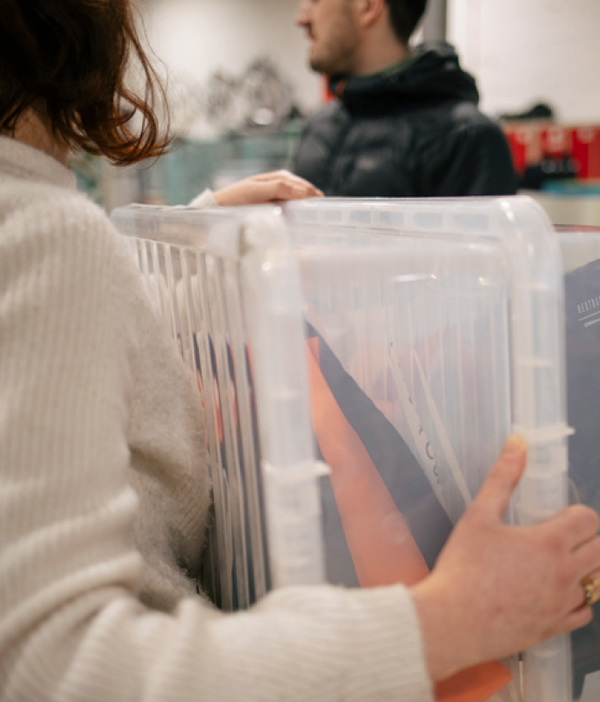Your cart is empty!
A Principled Approach: The Touriste Routier

In his final blog post before embarking on his epic lap of France, Samuel Thompson of Acier.cc reflects on the rules he must follow and principles that he has chosen to embrace. You can follow his ride here.
Over to Samuel, and best of luck to him from the team at Restrap.
On 15 June, I will set out to complete the Tour de France Randonneur, a 4,800km route tracing the perimeter of France. I am enticed and motivated by the prospect of attempting to better the current fastest recording time, set by Kristof Allegaert in 2011 at 13 days, 2 hours, 15 minutes. However, this record is not the be all and end all. I want to take this on in a manner that I feel befits the traditions of the route, its links with early editions of the Tour de France, and the principles of self-sufficiency that I find so rewarding in the modern ultra-distance cycling scene. The rules set out by the organisers of the Tour de France Randonneur leave scope for riders to take on the route with varying degrees of support, so for me it is important to define the manner in which I truly want to embark on this challenge. I have given this a lot of thought and have landed on the principles I will describe in this piece. First though, the rules.

The Rules
Detailed by US Métro Cyclo, the rules (or règlements) are fairly simple and straightforward, with the pertinent obligations being:
- Pass through the 61 controls and gain evidence of having done so.
- Accompanying vehicles and support is authorised. However, these vehicles must not follow the rider or be a hindrance to other traffic.
- Each rider must deem themselves as being on a personal excursion and respect the rules of the road and the environment. A helmet and high-vis vest are strongly recommended.
That’s about it for the on-the-road requirements. This leaves open the possibility to engage a level of support that would not typically be permitted in self-supported ultra-distance events. To an extent, I would like to harness this support. Although when considering the principles that are important to me, ceding too much control would detract from my experience and take away some of the personal satisfaction. Plus, the Touriste Routiers had no full support crew.

My Principles
The rules set out by the organisers are clearly a lot more relaxed than those I am more familiar with when racing self-supported ultra-distance events. This is a randonnée after all. Still, they state that this should be considered as a ‘personal excursion’ and I intend to treat it in the spirit of self-sufficiency. In the spirit of the Touriste Routier. I would here draw the distinction between being unsupported. In fact, I want to harness the support of others, whether that be moral or physical whilst on the road. However, I also want not to solely rely on this support and retain control of my experience. I have therefore decided to accept support, without necessarily soliciting it.

There is a balance that I have considered, as although I am enticed and motivated by the prospect of setting a fastest time for the route, I want this to be in a way that celebrates the self-sufficient aspects of the sport which I find the most rewarding. The rules technically permit one to have a support team meeting the rider at any point along the route and if the record was all that counted then that may be the most efficient approach. Sure, someone else could come along next year with a full support crew and beat my time, but that would be their choice to make and not mine. I can’t control what others will do and I will be cool with this. Especially if I have inspired others to take on similar challenges.

My project isn’t about what comes after anyway, it is about doing the ride I want to do in a way I can be proud of. In this way I was inspired by Jenny Graham’s approach to her Round The World record. Guinness draws no distinction between supported and unsupported but still Jenny chose to embark on her ride in a self-sufficient manner. Although this added a level of logistics and complexity, this only made the achievement more remarkable and seemed to result in a more enriching experience.

The Touriste Routiers were independent, insofar as they had no teammates during the race or dedicated support. They could make use of what was available to all riders during the race, but between stages they had to fend for themselves. They will have received kind offers of assistance, similar to ‘trail magic’ in an ultra-distance race. In race situations, I hesitate whether to accept such support, as it is not always guaranteed to be available to other participants.

This time though, I want to be open to these opportunities and highlight how important the community is in the ultra-distance cycling space. If someone wishes to come and ride with me for a while whilst bringing me, say, a croissant, I will happily accept this. Such an offering in isolation isn’t going to make or break my ride. I have pondered more on offers of accommodation and have come to the conclusion that I would accept assistance in this form as long as I am not planning for it in advance or soliciting it (i.e. asking on Instagram if anyone has a friend of a friend in a certain place who could put me up). If it serendipitously turns out that I am offered a bed in the right place at the right time, I will take it. These are the most likely scenarios and, although I can’t foresee all eventualities, my principles are intended to give the framework for how I will approach similar situations.

To summarise these thoughts and in order for me to be clear to myself, as much as others, about how I intend to take on this challenge, I have set out the five following principles.
- Above all, I will respect the rules and regulations set out by the organisers.
- I will accept support and assistance from others but I will not solicit this or plan for it in advance.
- I will take responsibility for my own logistics and on-the-road tasks such as resupply, sleeping locations and mechanical issues.
- All forward travel will be under my own steam - if I am riding with others I will not draft behind them.
- I will ride in the spirit of the Touriste Routier. I have a performance objective but this is also an experience I want to savour, completing in a manner that I can personally be proud of.

Outside of the first, there is no one to hold me accountable to these principles other than myself. If I can look back afterwards and be satisfied that I have upheld these principles to the best of my ability, I can be satisfied that I have taken on this challenge in the way I believe befits the purpose of embarking upon it. Maybe I am slightly hamstringing myself from a purely performance outlook but, as I have said from the start, this is not about the record at all costs. My aim is to revive the spirit of the Touriste Routier, combining the elements of travel & discovery with achieving a performance-oriented goal. I still truly believe that the record is a realistic target whilst adhering to my principles and achieving it in this way would be the ultimate reward.
Croire en ses rêves et se donner les moyens.
The Route
As stated in the règlements, there are 61 control points that I must pass through, gaining proof of passage, or taking a photograph of my bicycle, at each. The preferred method by the organiser is to acquire a stamp for the carnet de route, or log book (essentially a very big brevet card), from a business in that location. If you know me at all, you will understand that this is likely to result in at least 61 guaranteed visits to boulangeries! In the event that this isn’t possible, due to passing through at night for example, then a photograph can be taken and attached to my carnet de route.

Between the controls though, the choice is mine. The organisers provide a parcours type which links the controls via a route comprising approximately 4,800km and 50,000m ascent. In certain locations there is also an option to choose the variante route comprising alternative control points. Participants are permitted to choose between the standard and variante controls and the locations are designed as such that the overall distance and elevation for either is very similar.
I have therefore based my route planning on using the parcours type as a starting point, utilising the 18 GPX files provided by the organiser. However, these are provided for an anti-clockwise tour so my first job has been to reverse these and ensure that this does not result in unexpected detours or routing in the wrong direction around one-way systems (ubiquitous in French towns).

I have chosen to use three sections of the variante route, firstly as my home town of Manosque is a variante control. The second is to stay inland, skirting east of Bordeaux to avoid having to take a ferry across the Gironde river. Finally, for the third I have chosen to avoid Geneva (which despite being in Switzerland, is traversed via the parcours type) and keep this a 100% francais affair by taking the variante route to the west.
From there it has been a case of running through each stage with a fine tooth comb and identifying where the organisers’ route may have opted for the ‘scenic’ option rather than a more direct route. I want the route to be as efficient as possible so in places this may involve using some roads I may not choose if I were not in such a hurry. However, I wont be taking this to an extreme by placing myself on potentially dangerous roads for the sake of saving a few minutes. Fortunately, there are very few cases of this in the areas of France I will be passing so the most direct route is rarely that bad.

I have also received the kind assistance of friends from all six corners of l’Hexagone who have reviewed my route and offered advice and amendments based on their local expertise. This involvement of others is an aspect of this project that has been so enriching and energising. That people take an interest in what I am planning and are so generous with their time to help is something I am so grateful for.
The final piece of this route planning puzzle will be compiling route notes comprising resupply options, potential accommodation and boulangerie opening hours (!). It is unlikely I will be faced with any significant sections without the option to resupply (except for Sunday afternoons) but I aim to be as efficient as possible so being armed with as much information as possible and having this accessible on the move will allow me to reduce the amount of thinking I will have to do in a potentially fatigued state. Unless I catch a stonking tailwind the whole way around it is likely I will have to be riding for around 16 hours per day so the less I can stop during the day, the more time I can prioritise for sleep. Over 13 days, running too much of a sleep debt will be unsustainable so I will have to be getting enough quality sleep each night.

Finally, my map will kindly be hosted by Follow My Challenge so you will have the opportunity to follow my dot make its way around all six corners of France. And if you happen to be close to the route at the time I pass through, please come and join me for a while. I wont solicit any croissants but if hypothetically you were to bring me one, I may well be very grateful for it!
All photos of Samuel riding, credit https://www.instagram.com/bite.of.me/ and https://www.instagram.com/theunknown_race/.














